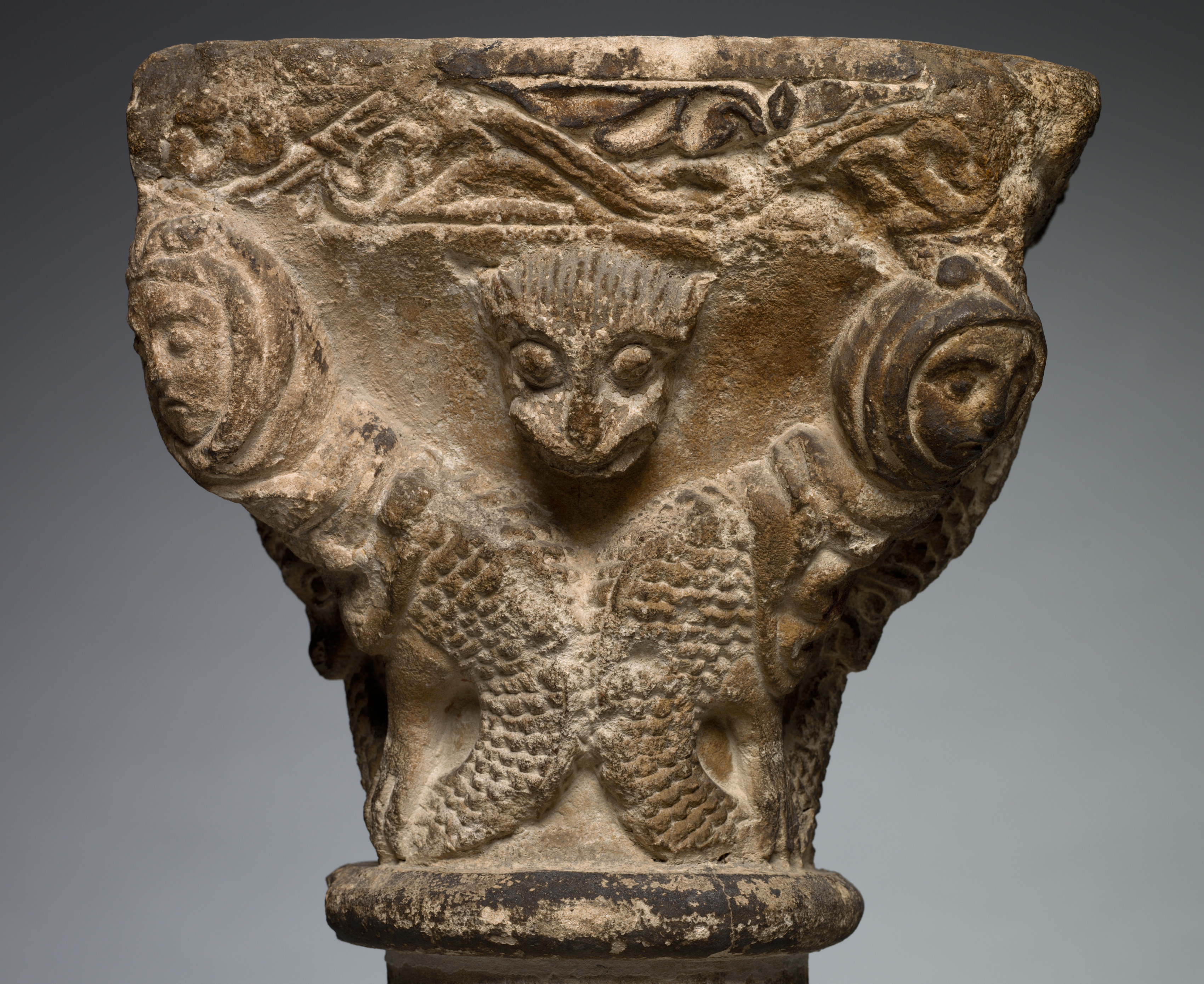The Cleveland Museum of Art
Collection Online as of April 20, 2024

Capital with Addorsed Harpies
1200s
Overall: 23.5 x 28 x 23.2 cm (9 1/4 x 11 x 9 1/8 in.)
Location: not on view
Did You Know?
A harpy is part bird and part woman featured often in Greek mythology.Description
Monstrous images were prevalent in the decoration of religious buildings during the Middle Ages. Such images must have impressed, perhaps even terrified, the monks and visitors who spent much of their time within the cloister or church, a place of prayer, contemplation, and reflection. Scholars have speculated how such images would have been received by the people given the ubiquity of monsters in medieval society. The carved monsters, often symbolizing vice and retribution for sin, were possibly designed to provoke a range of emotional responses including laughter, wonder, surprise, fear, and shock. This striking imagery must have had a strong impact, which in turn led Saint Bernard of Clairvaux (1090–1153), the spiritual head of the Cistercian order, to admonish their use as distracting from prayer.- Mrs. Chauncey J. Blair, Chicago, IL1916-The Cleveland Museum of Art, Cleveland, OH
- Cahn, Walter, and Linda Seidel. Romanesque Sculpture in American Collections. New York: B. Franklin, 1978. Vol. III, no. B III 9, 158-59Mikolic, Amanda. A Field Guide to Medieval Monsters.Cleveland; The Cleveland Museum of Art, 2019. Reproduced: p. 9
- Medieval Monsters: Terrors, Aliens, Wonders. The Cleveland Museum of Art, Cleveland, OH (July 7-October 6, 2019).
- {{cite web|title=Capital with Addorsed Harpies|url=false|author=|year=1200s|access-date=20 April 2024|publisher=Cleveland Museum of Art}}
Source URL:
https://www.clevelandart.org/art/1916.1983